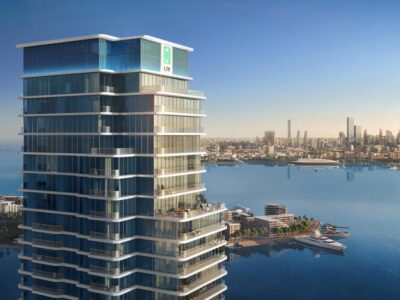In times of market turbulence, be it in stock markets, commodity prices or real estate sales, the six million dollar question for investors is: where is the floor?
If futures traders consider $40 oil to be as low as it can go, the market should see a buying spree that will push prices up from that level.
There is evidence that stock market traders saw the floor for the Dow Jones Industrial Average at 8000; the FTSE 100 at 4000, and the Dubai Financial Market General Index at 2000 (traders love round numbers).
Because so much property in Dubai is a tradable commodity – it is traded as paper rather than as somewhere to live – the price has fallen far faster than even the most pessimistic of commentators predicted.
Buyers evacuated the market during September in such a rush that it was impossible to judge the value of property. As a result, there were virtually no transactions, a situation that continues to the present day.
The market will only restart when buyers feel the price of property has found some sort of floor, from which it will begin to rise. But what is that number?
There is no reliable index of property prices that can be used as a guide but, if there were, I think the floor would be at 30 percent of peak prices.
In other words, buyers will only return to the market when 70 percent has been wiped off the value of villas and apartments in the city.
I do have one caveat: the market for completed property will significantly outperform the market for un-built property because rental rates are so high that the financial case for buying property is more compelling if families subtract the inescapable cost of rent from their cost of owning a property – even if it is depreciating in value.
To explain why I think the floor for the property market is 30 percent of peak values, you have to consider what drove prices to their peak before summer this year, and what are the prevailing market conditions today and for the year ahead.
Much of my thinking is outlined in my last commentary “Property Poker”. To summarise, amateur gamblers that made quick money flipping property in the boom times kept reinvesting their profits in more and more expensive developments.
This has continued to the point where very few of them hold cash, but they all hold property in which they have made hefty down payments – normally 30 percent of the asking price.
Very few of these speculators can afford to be holding the freehold to these properties when the building is complete, because at this stage they need to raise the other 70 percent of the asking price in the form of a mortgage.
And, guess what, the banks will not be lending them the money because they will not take a risk on an asset that is already worth dramatically less than its original sale price.
If speculators cannot raise the finance to pay the outstanding balance, they run into default, a situation that is currently very poorly regulated (a subject I will return to in another article, and I would love to receive comments on at the end of this article).
But the best guess at the moment is that the original developer will repossess the property, leaving the speculator with nothing.
The full 30 percent down payment will be lost, and there is even speculation that developers will pursue defaulters for any further losses they incur as repossessed properties flood the market.
This is why I think 30 percent of the peak is the floor. The least bad scenario for a speculator is to dump all properties before they get handed any keys to completed villas and apartments. At least they get their original stake back, even if they have made no profit during the period they owned the property on paper.
The complication for this theory is at what point you consider the peak of the market to be. This is will come down to speculators’ portfolios, and is dependent on when they bought their properties.
If they bought off plan in 2007, they saw their portfolios grow in value by roughly 50 percent in the first half of 2008, so the 30 percent rule applies to the price at which they bought property, not the value at its peak in mid-2008. (The vast majority of speculators that bought before 2007 will have already flipped the properties since so can be largely discounted).
This points to even worse news for those that bought right at the peak this summer. Speculators bailing out at 70 percent below the price they bought at in 2007 will sell at around 80 percent below the value of the summer peak.
Taking this additional negative factor into account, and building in the more positive impact on prices created by people moving from renting to buying, I think the 30 percent theory is the best I can offer.
Regrettably, my greatest fear is that 30 percent is optimistic. If buyers do not collectively agree that this is the floor they will stay out of the market until it falls even further.
This will leave masses of speculators trying to raise mortgages to cover the outstanding 70 percent balance of the price at which they bought, and very few able to do so.
Developers will be left pondering whether to exercise their rights over defaulters, or support speculators by giving them more time to pay – probably by delaying the completion of thousands of properties.
When all this pain has worked through, Dubai will emerge as a strong and vibrant metropolis in which hard working families will be able to own property at reasonable prices, and get on with the businesses of building lasting rewarding lives in the city.






